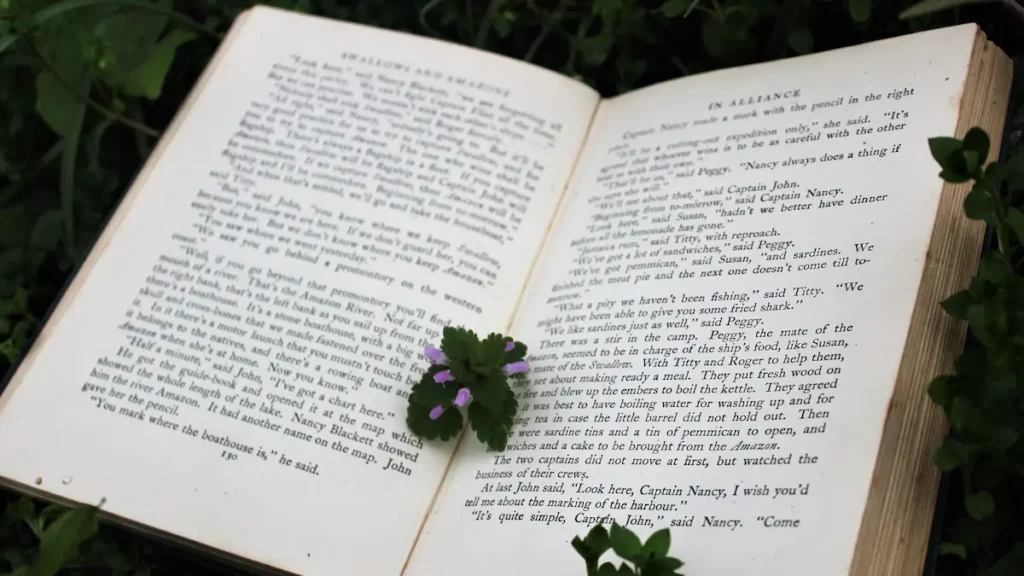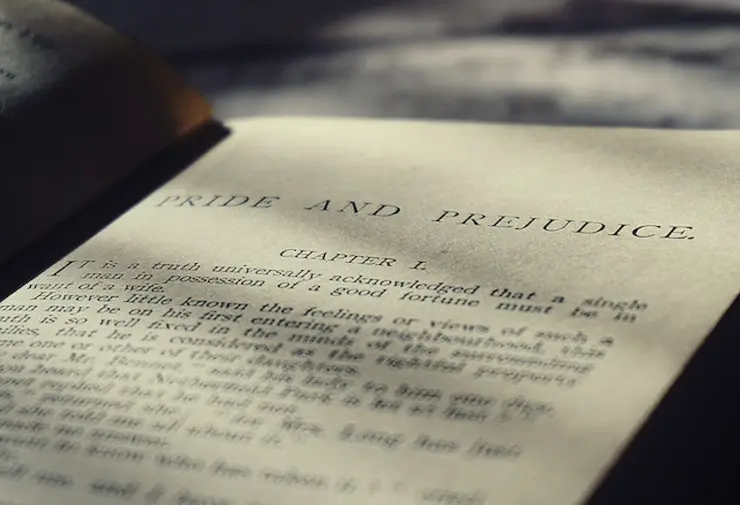The periodic sentence holds an intriguing allure for students and educators steeped in linguistics, rhetoric, and literature. This unique structure deliberately postpones the main idea until the end, building suspense and gradually allowing complex concepts to unfold. Periodic sentences differ from loose and cumulative styles, where primary points come first. Master wordsmiths from Dickens to Austen have used them to enthrall readers.
When skillfully executed, periodic sentences spotlight important ideas, facilitate sophisticated connections, vary the rhythm, and add an artistic flourish. Their unconventional nature offers welcome relief from direct prose while challenging readers’ expectations. Yet overusing this device can frustrate audiences and dilute its power. The key is strategic placement.

What is a periodic sentence?
A periodic sentence is a stylistic device in which the main idea or principal clause is delayed or withheld until the end of the sentence. The sentence unfolds gradually, building suspense and holding readers’ attention as they anticipate the main point or conclusion. The structure contrasts with the common loose or cumulative sentence, where the main idea is presented at the beginning.
In a periodic sentence:
- The main clause comes at the end
- Subordinate clauses and phrases come first
- Ideas build up to a climactic finish
Example:
By the time the sun had set, the streets emptied of its bustling crowd, and the lights started to dim, the city revealed its true, serene nature.
Main idea: The city revealed its true, serene nature.
Why use periodic sentences?
Periodic sentences are effective rhetorical tools with compelling benefits:
Create suspense
Writers can build anticipation and intrigue, withholding the main idea for the latest part of the sentence. Readers are drawn in, eager to reach the final climactic reveal.
Emphasize the main point
Placing the primary clause at the end allows it to resonate with readers, leaving a lasting impression. The sentence leads up to an impactful crescendo.
Facilitate complex thoughts
Periodic structures allow writers to present multiple subordinate ideas before arriving at the primary statement, enabling more sophisticated, intricate concepts.
Add literary flair
The unconventional structure makes periodic sentences more artistic and lyrical. Used well, they demonstrate verbal panache.
Vary sentence patterns
Periodic sentences add welcome variety alongside loose and cumulative structures, enhancing flow and rhythm.
Generally, periodic sentences are powerful writing tools to pique interest, highlight ideas, and showcase skills. Let’s look at some examples.
Examples of periodic sentences
Literature examples
Great authors often employ periodic sentences to captivate readers. Here are some examples from famous literary works:
Pride and Prejudice by Jane Austen

“It is a truth universally acknowledged, that a single man in possession of a good fortune, must be in want of a wife.”
The Great Gatsby by F. Scott Fitzgerald
“In his blue gardens men and girls came and went like moths among the whisperings and the champagne and the stars.”
To Kill a Mockingbird by Harper Lee
“Until I feared I would lose it, I never loved to read.”
The Kite Runner by Khaled Hosseini
“It always hurts more to have and lose than to not have in the first place.”
In each example, the key idea lands in a compelling periodic style at the end. This structure highlights the central themes in an impactful manner.
Everyday examples
Periodic sentences are not just literary devices – they can be used for emphasis and flair in everyday communication. For example:
- The glorious vista unfolded before our eyes after the long, arduous hike to the summit.
Main idea: The glorious vista unfolded before our eyes. - Though the speech began shakily with some stutters, Amanda gathered composure and roused the crowd with a powerful, persuasive address.
Main idea: Amanda roused the crowd with a powerful, persuasive address. - Subject to the fickle moods of the ocean, struck by massive waves, and weathered by salty air, the old lighthouse still stands tall after two centuries.
Main idea: The old lighthouse still stands tall after two centuries.
Observe how each periodic sentence builds complexity before ending with a descriptive main clause. This invokes curiosity while highlighting the key point.
How to construct periodic sentences
Here are some tips for constructing effective periodic sentences:
- Start with subordinate clauses – Begin with descriptive phrases and clauses leading to the main idea. Build context first.
- Vary structure – Use clauses like participial, infinitive, appositive, or prepositional phrases to introduce ideas.
- Increase complexity – Go from simple to more complex clauses to vary rhythm and build intrigue.
- Save the main clause – Hold your key point until the end for maximum impact.
- Read aloud – Periodic sentences are meant to be heard. Read them aloud to judge flow and cadence.
- Use judiciously – Periodic style is powerful in moderation. Use too often, and impact is diluted.
- Focus on style – Periodic form complements ideas requiring complex build-up like arguments or impactful descriptions.
With practice, you can adeptly construct suspenseful yet coherent periodic sentences. Always read them aloud to assess the intended effect.
Periodic sentences vs. other structures
It helps to understand periodic sentences by comparing them to other common sentence structures.
Loose sentences
A loose sentence presents the main idea first, followed by dependent clauses. For example:
The old lighthouse still stands tall after two centuries, subject to the fickle moods of the ocean, struck by massive waves, and weathered by salty air.
Loose sentences focus on clarity and logic. Periodic sentences focus on buildup and climax.
Cumulative sentences
A cumulative sentence begins with the main idea and then expands with phrases and clauses. For example:
The old lighthouse still stands tall after two centuries, enduring the harshness of the elements throughout its long history.
Like loose structures, cumulative sentences state the point first. Periodic sentences reveal it last.
Balanced sentences
A balanced sentence presents two ideas of equal weight in parallel, using repetition. For example:
The waves crashed as the winds roared, and the lighthouse endured as it had for centuries.
Balanced and periodic structures both utilize rhythm but differ in main idea placement.
Understanding these contrasts lets you decide when periodic phrasing is most appropriate.
Periodic sentences in literature
Acclaimed writers have used periodic sentences throughout history to captivate readers. Examining periodic sentences in literature offers insights into the power of this rhetorical device.
Charles Dickens
The famous opening line of Charles Dickens’s A Tale of Two Cities is an iconic periodic sentence:
“It was the best of times, it was the worst of times, it was the age of wisdom, it was the age of foolishness, it was the epoch of belief, it was the epoch of incredulity, it was the season of light, it was the season of darkness, it was the spring of hope, it was the winter of despair.”
This sentence immerses readers into the contradictory setting of late 18th-century England and France. The parallels and contrasts build interest before the context is finally revealed.
Jane Austen
Jane Austen utilized periodic phrasing masterfully in her novels. The opening line of Pride and Prejudice is one oft-cited example:
“It is a truth universally acknowledged, that a single man in possession of a good fortune must be in want of a wife.”
Here, Austen delays the key proposition to cleverly hook readers. The periodic style encapsulates both the tone and themes of the story.
William Shakespeare

The Bard incorporated periodic sentences into his works to deliver powerful, thought-provoking ideas. For example, in Macbeth:
“And nothing is but what is not.”
This philosophic line exemplifies Shakespeare’s penchant for periodic structure in his pithy, impactful phrases. The sentence leads readers to an intriguing conclusion.
These examples demonstrate how iconic authors have turned to the periodic sentence to entice audiences while communicating profound concepts. For any writer, observing periodic sentences artfully woven into fiction and nonfiction texts can inspire mastery of this device.
Tips for using periodic sentences
Here are some tips to employ periodic sentences effectively:
Vary your sentence structure
Overusing any single sentence type can grow monotonous. Sprinkle periodic sentences judiciously amidst loose and cumulative structures for optimal flow.
Limit length
Extremely long periodic structures can frustrate readers. Keep dependent clauses brief and impactful before delivering the main point.
Read periodic sentences aloud
As oral devices, periodic sentences must sound right. Read them aloud and refine until the cadence resonates.
Use at turning points
Periodic punch is perfect for pivotal moments in a narrative or argument. Set up climactic scenes with suspense.
Avoid confusion
The dependent clauses should logically build up to the main idea. Avoid disjointed phrases that confuse.
Consider your audience and purpose
Formal writing may call for clear, direct prose. Informal language can handle more flourish. Know when the periodic style is appropriate.
Mastering periodic sentences takes practice. With care, it can elevate your writing style.
Examples of common uses for periodic sentences
Periodic sentences serve a variety of purposes. Here are some common applications:
Descriptive scenes
The delayed climax of periodic sentences builds anticipation, making them ideal for vivid descriptions. For example:
Under the summer sun, across the dry, dusty plains, beyond the towering ridges, and next to the glistening lake nestled the mountain town.
Here is what the graphic image would look like:

Compelling openings
Periodic openers grab attention. For example:
Bathed in the first rays of dawn, dewdrops glistening after the stormy night, the valley awakened from its slumber.
Turning points
Use periodic sentences to deliver impactful pivots in plots or arguments. For example:
After years confined to a tower, locked away from the world, Rapunzel finally tasted freedom.
Philosophical ideas
Periodic style lends power to profound concepts. For example:
Of all life’s treasures, none are so precious as moments of pure joy.
These examples demonstrate the versatility of the periodic sentence for key moments in writing. Insert periodic punctuation strategically where it can best captivate readers.
Periodic sentence examples by theme
Here are additional periodic sentence examples organized by theme or topic to inspire your writing:
Nature
- Ensnared by creeping vines, weathered by storms, the crumbling statue had become one with the garden.
- Beyond the meadow, through the misty evergreens, a lone fawn took its first steps into the forest.
- Gushing with meltwater, gleaming under the summer sun, the stream welcomed us to drink from its clear waters.
Travel
- Along winding cobblestone streets, passing historic landmarks, we immersed ourselves in the old-world charm of Prague.
- From bustling bazaars to serene temples, India overwhelmed the senses through spicy aromas and colorful textiles.
- Across the arid plains, beyond the great pyramid, the Nile stretched like a lifeline through the Egyptian desert.
Relationships
- After years apart, tears shed, and heartache endured, reconciliation brought hope of rekindled love.
- Seeing joy light up her eyes, hearing her melodious laugh, I realized friendship was life’s greatest gift.
- No matter the storms weathered, pains suffered, or passions faded, our lifelong bond remained stronger than ever.
Add your own ideas and themes to generate vivid periodic sentences for any genre or topic.
Key takeaways
- Periodic sentences strategically place the main idea at the end to build suspense and climax.
- Subordinate clauses precede the main clause, increasing complexity.
- Periodic structure spotlights the key point, adds flair, and facilitates complex ideas.
- Great writers like Dickens and Austen employed periodic phrasing to entice readers.
- Use periodic sentences judiciously among other structures for optimal flow.
- Construct periodic sentences by starting with descriptors, building complexity, and ending with the main point.
Understanding the purpose and power of periodic sentences enriches both writing and reading. A hallmark of rhetorical skill, this structure empowers the impactful delivery of insights, arguments, and tales.
FAQs about periodic sentences
Here are answers to some frequently asked questions about periodic sentences:
What are the differences between periodic, loose, and cumulative sentences?
- Periodic – The main idea comes at the end after the buildup.
- Loose – Main idea stated first, descriptors after.
- Cumulative – Main idea first, then expanded upon.
How can I construct good periodic sentences?
Start with subordinate ideas, increase complexity, vary structure, save the main point for last, and read aloud to polish.
When should I use periodic sentences?
Use periodic sentences for key moments like compelling openings, turning points, vivid descriptions, and profound ideas.
Are periodic sentences casual or formal?
Periodic sentences are often viewed as more literary and formal. But they can be used creatively in many contexts when well-constructed.
Can periodic sentences become too long or complex?
Yes, very lengthy or convoluted periodic sentences can frustrate readers. Aim for brevity in sub-clauses before the climactic reveal.
Should I use periodic sentences in my writing?
Used judiciously among other structures, periodic sentences can captivate readers. Just take care not to overuse them. Try weaving in a few for emphasis.
How can I analyze periodic sentences in literature?
Identify where authors use them at key moments. Examine how they build suspension and intrigue before delivering the main idea.
Can periodic sentences work in nonfiction like reports?
They can use introductions or conclusions to hook interest. But most reports favor clarity over literary flair, so use periodic structure sparingly.
What makes periodic sentences so powerful?
The delayed gratification challenges readers while building anticipation, making the climax more rewarding. This captivates audiences.
Using periodic sentences well demonstrates rhetorical skills. Mastering this structure takes practice but pays dividends in impactful writing.
